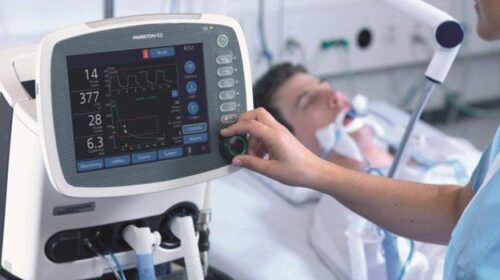Global Respiratory Care Device Market to Surge at 10.44% CAGR, which is anticipated to reach USD 60.29 billion by 2030.
CRI Report has released a report titled “Respiratory Care Device market – Analysis of Market Size, Share & Trends for 2020 – 2030 and Forecasts to 2030” which is anticipated to reach USD 60.29 billion by 2030. According to a study by CRI Report, the market is anticipated to portray a CAGR of 10.44% between 2020 and 2030. According to the report, the market is estimated to proliferate owing to an unexpected increase in demand for respiratory care devices during COVID 19 Pandemic. Apart from that the high prevalence of respiratory illnesses, the global aging population, the high prevalence of smoking, rising urbanization and pollution levels, the rising incidence of preterm births, and lifestyle changes are all contributing to the market’s rise.
The market report on global Respiratory Care Device market includes in-depth insights as:
- The estimated value of the market was USD 22.34 billion in the year 2020.
- Region-wise, the market in North America which held the largest market share in the year 2019, emerged as a key market for Respiratory Care Device Market.
- Based on Therapeutic devices, Inhaler segment emerged as a key segment in the global Respiratory Care Device Market.
- Based on Monitoring Devices, Pulse Oximeters segment emerged as a key segment in the global Respiratory Care Device market.
- Key players are likely to focus on product innovations and expansion through mergers to retain their positions in developed markets.
“Demand for respiratory treatment is directly driven by infectious respiratory illnesses. The most recent and serious of these illnesses is COVID-19, which has led in a rise in demand for personal protective equipment and ventilators, among other things. Because of the COVID-19 epidemic, there has been an increase in demand for ventilators, prompting government and industry assistance to speed up production. As a consequence of the increased focus on respiratory treatment in the context of an outbreak, the market is projected to grow at a strong rate.”, according to this report
Medical equipment used for the diagnosis, management, care, control, treatment, and assessment of patients with cardiopulmonary disorders is referred to as a respiratory care device. These are used to treat degenerative lung disorders such as asthma, emphysema, chronic bronchitis, and other chronic and acute respiratory illnesses. Furthermore, monitoring equipment are critical for keeping track on the health of individuals with respiratory diseases. The World Health Organization (WHO) estimates that 235 million people will suffer from asthma by 2020. This denotes the necessity for asthmatic patients to get respiratory treatment.
Global Respiratory Care Device market is segmented by Therapeutic devices into PAP Devices, Ventilators, Nebulizers, Humidifiers, Oxygen Concentrators, Inhalers, Reusable Resuscitators, Nitric Oxide Delivery Units, Oxygen Hoods. The Inhaler segment of the respiratory care devices market accounted for the biggest proportion of the market in 2019. Inhalers are commonly used to treat severe respiratory illnesses. Metered-dose inhalers (MDIs) and dry-powder inhalers are the two types (DPIs). The rising prevalence of asthma is a major driver driving the global inhalers market forward throughout the predicted period.
Key Players in the Market
- Some of the key players operating in the global Respiratory Care Device market are Koninklijke Philips N.V., ResMed, Medtronic, Fisher and Paykel Healthcare Limited, BD (U.S.), Chart Industries, Inc., Drägerwerk AG & Co. KGaA, Hamilton Medical, Teleflex Incorporated, 3M
Get Valuable Insights into Global Respiratory Care Device Market
In the new report, CRI Report thrives to present an unbiased analysis of the global Respiratory Care Device market that covers the historical demand data as well as the forecast figures for the period, i.e., 2020-2030. The study includes compelling insights into growth that is witnessed in the market. The market is segmented by Product into Therapeutic devices, Monitoring Devices, Diagnostic Devices, Consumables, and accessories. By End-User into Hospitals, Homecare Settings, Ambulatory care centers, and Others. Geographically, the market is segmented into North America, Latin America, Europe, Asia Pacific, and Middle East, and Africa.




